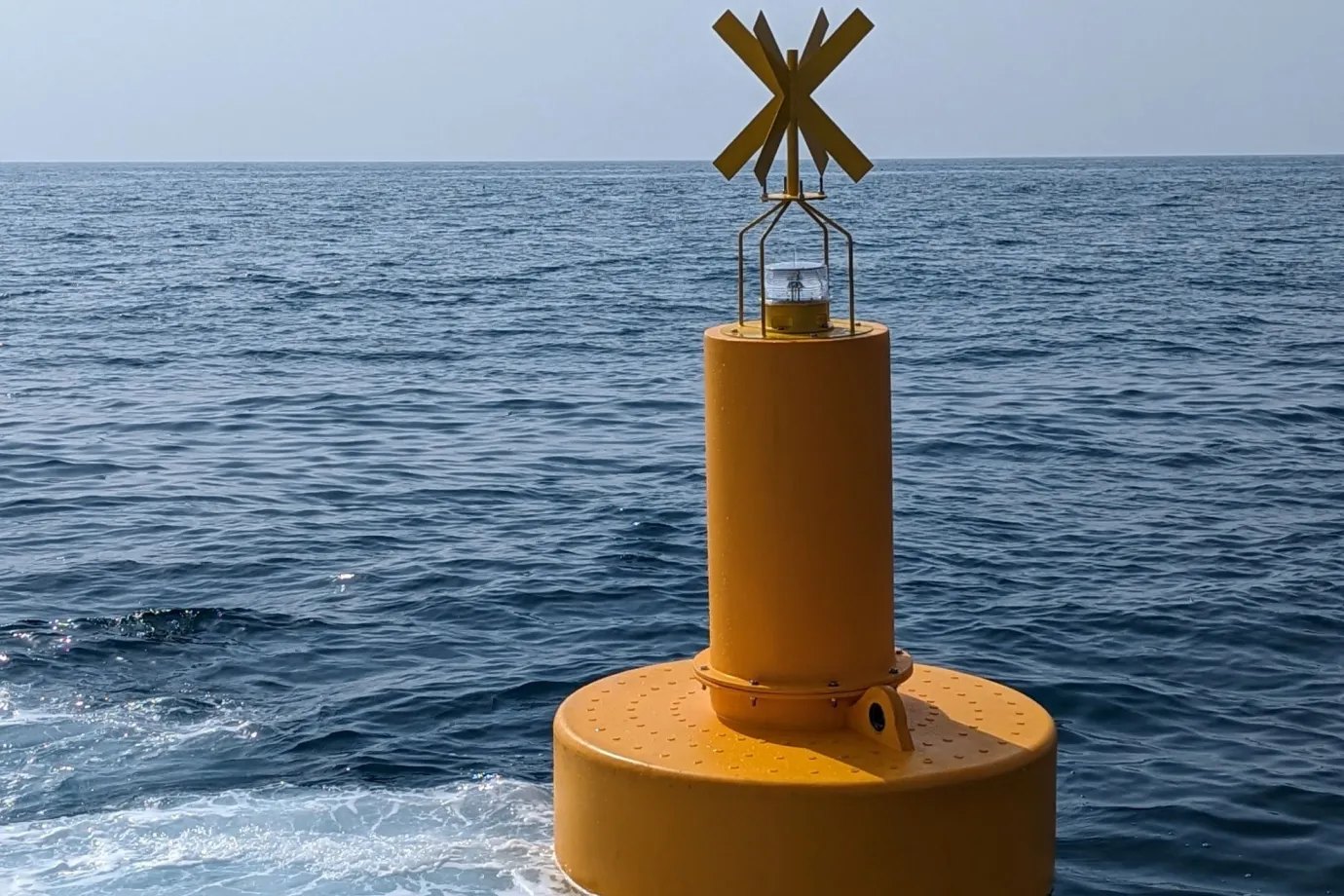Railway tracks are among the most critical components of modern transportation infrastructure, ensuring the smooth and safe movement of freight and passenger trains. However, with increasing train speeds, higher axle loads, and rising traffic density, rail defects have become a growing concern. If not detected early, these defects can lead to serious consequences, including derailments and service disruptions. According to the European Railway Safety Agency, track-related issues cause significant railway accidents every two days in the European Union.
In Canada, where the rail network spans over 41,000 km (25,477 miles), maintaining track safety is an ongoing challenge. Traditional inspection methods, such as manual checks and ultrasonic testing, have been widely used, but they often lack precision, require extensive manpower, and are time-consuming. This has driven the adoption of more advanced, non-contact techniques like laser-based railway track inspection, which offers unparalleled accuracy and efficiency.
For accurate railhead wear monitoring and geometry assessment, explore our “rail track profile measurement tool“.

Laser-based rail inspection leverages high-speed laser scanning technology to detect surface and structural defects in real-time. Unlike conventional methods, it allows for non-contact, high-resolution data collection at full train speed, significantly improving railway safety and reducing maintenance costs. By integrating 3D laser scanning, artificial intelligence (AI), and machine learning, this technology can detect cracks, gauge deviations, rolling contact fatigue (RCF), and other defects with exceptional accuracy.
As railway infrastructure continues to expand, laser-based railway track inspection is becoming an essential tool for proactive maintenance. In this blog, we’ll explore how this innovative technology works, its applications, the most common track defects, and how it is transforming railway safety worldwide.
Importance of Laser-Based Railway Track Inspection
Railway tracks endure extreme mechanical stress due to increasing train speeds, heavy axle loads, and continuous operation. Over time, this wear and tear can lead to defects such as cracks, gauge deviations, and rolling contact fatigue (RCF), which, if left undetected, may result in derailments or costly repairs. Traditional inspection methods, including manual checks and ultrasonic testing, are often slow, labor-intensive, and limited in accuracy, making them insufficient for modern railway demands.
Laser-based railway track inspection addresses these challenges by offering non-contact, high-precision scanning that detects even the smallest surface irregularities in real-time. Unlike conventional methods, laser-based inspection works at full train speed, covering vast rail networks efficiently while minimizing service disruptions. Integrating AI-driven defect detection and 3D laser scanning further enhances its reliability, providing early warnings for maintenance teams.
With railway networks expanding globally, laser-based rail inspection is essential for ensuring long-term railway safety, operational efficiency, and cost-effective maintenance.
See also: “Railway Inspection and measurement systems“
Existing Rail Inspection Methods vs. Laser-Based Rail Inspection

Railway track inspection is a crucial process to ensure safe and reliable train operations, and over the years, various inspection techniques have been developed. Traditional methods, such as manual visual inspections and ultrasonic testing, have been widely used but have significant limitations in accuracy, efficiency, and consistency. Manual inspections rely on human judgment, making them prone to errors and subjectivity, while ultrasonic methods, though effective, require physical contact with the rail surface, limiting their ability to scan large rail networks efficiently.
Other conventional methods include eddy current testing, which is useful for detecting near-surface cracks but struggles with deeper defects, and infrared thermography, which can identify temperature variations but is influenced by environmental conditions. While helpful, these methods lack real-time data analysis and predictive capabilities, making proactive maintenance difficult.
Laser-based rail inspection, in contrast, provides high-speed, non-contact, and highly precise defect detection. It uses laser triangulation sensors and 3D imaging to measure rail profiles, detect irregularities, and analyze wear patterns. This method is faster and more accurate than traditional techniques and integrates artificial intelligence (AI) and machine learning, enabling automated defect detection and predictive maintenance.
By continuously scanning tracks at operational train speeds, laser-based railway track inspection ensures minimal service disruption while improving safety and reducing long-term maintenance costs. Laser-based inspection is becoming the industry standard for proactive and cost-effective rail maintenance as railway infrastructure grows.
What is the 3D laser-based rail inspection?

Numerous studies about laser-based approaches to assist rail inspection have been carried out as a form of machine vision technology. For example, some new trains are equipped with laser track scanners to get a detailed 2D rail-head profile to ensure a 2D full-rail shape and evaluate the rail surface conditions by comparison with the standard profile. 2D imaging has its advantages, such as high resolution and high efficiency with the capability to inspect at train speed; however, the geometrical characteristics of some defects, like the particular cracks, squats, and partial deformation of crossing noses, are longitudinal in nature, and thus difficult to detect using 2D techniques.
In recent years, the quality of 3D imaging techniques has improved substantially with the development of sensor technology and processing capabilities. This article’s proposed 3D laser-based system explores the feasibility of applying 3D techniques to rail inspection. The main goal is that the system can not only measure the 2D transverse profile but also allow common longitudinal surface defects with different geometrical characteristics to be detected and characterized more comprehensively than 2D techniques.
Applications of laser-based rail inspection

Track measurements are necessary for the rail industry to ensure safety. Trolleys for short sections of track, and for longer rail routes, locomotives are used to carry these laser sensors. With micrometer precision, manual and small locomotives use four 2D/3D profile sensors to check for bare or rusted steel rails. Via laser triangulation, the sensors provide width, inclination, irregularities, or damage values. The sensors reliably measure in all weather conditions, high levels of ambient light, such as sunlight, and any temperature.
The laser-based rail profile measurement Artificial Intelligence algorithms automatically measure and detect changes related to gauge, cross-level, alignment, spikes, clips, tie plates, joint gap, joint bar bolting, rail surface wear, and tie grade.
What are the most common railway track defects?
Dedicated rail components consist of plain track and crossing noses. A rail profile consists of a rail foot, a rail web, and a railhead.
Rail defects can be divided into three categories: rail manufacturing defects, defects resulting from improper handling, use, and installation, and defects caused by rolling contact fatigue (RCF) crack growth. Defects belonging to the first two categories have been significantly reduced globally with the improvement of materials and rail-making industries.
However, defects in the third category are difficult to control and prevent because they usually originate from the cyclical loading and long-term impact of rolling stock. In railway systems, RCF describes a range of defects caused by the development of excessive shear stresses at the rail contact interface. It is known that the gauge corner region, the running surface, and the field corner regions are the areas that make contact with the wheel; thus, defects in the third category that endanger the movement of the train are mostly centered in these regions.
See also: “Railway Defect Detection Methods“
As one of the most critical components of the railway infrastructure, switches and crossings are used to guide trains from one track to another and enable lines to cross paths. It can be fabricated from two machined rails joined together or cast as a single unit. Modern crossings are now released from manganese steel, an advanced alloy that gets harder with use. However, an increase in axle loads and train speed creates larger lateral forces as they change course, and these forces can cause wear, RCF, and deformation. Flaws in crossings may eventually lead to grave consequences such as train derailments.
System description of laser-based rail profile inspection
A laser generally refers to a device that emits light utilizing optical amplification based on stimulated emission. The property of optical coherence allows laser light to be focused on a tight spot and makes a laser beam stay highly collimated even after long-distance transmission. According to the geometrical characteristics of the laser light, laser scanners can be categorized as 1D, 2D, or 3D.
Laser-based inspection methods often incorporate vision-based inspection. For example, profile data are analyzed using image processing methods or by combining what the camera sees with laser inspection to improve accuracy. The system can detect missing clips with 2D depth images using 2D template-matching algorithms, but the measurement is implemented in 2D, while the 3D model is discrete in the longitudinal direction. There exist some opportunities to improve the performance of laser-based rail inspection.
Conclusion
Railway track inspection is critical to ensuring the safety, efficiency, and longevity of rail networks worldwide. With the increasing demands of higher train speeds, heavier axle loads, and growing traffic density, traditional inspection methods have become insufficient in detecting and preventing rail defects. This has led to the adoption of laser-based railway track inspection, a game-changing technology that offers high-speed, non-contact, and precise defect detection.
By leveraging 3D laser scanning, artificial intelligence (AI), and machine learning, laser-based railway track inspection provides railway operators with real-time insights into track conditions. This enables proactive maintenance and reduces costly service disruptions. Unlike conventional techniques, laser-based inspection methods work efficiently at full train speed, ensuring thorough coverage while enhancing accuracy.
Laser-based rail inspection is becoming the industry standard as rail infrastructure expands, offering unmatched precision, automation, and predictive maintenance capabilities. By integrating this innovative technology, railway operators can enhance safety, improve operational efficiency, and significantly extend the lifespan of railway assets. Embracing laser-based railway track inspection is no longer an option—it is a necessity for the future of railway transportation.




